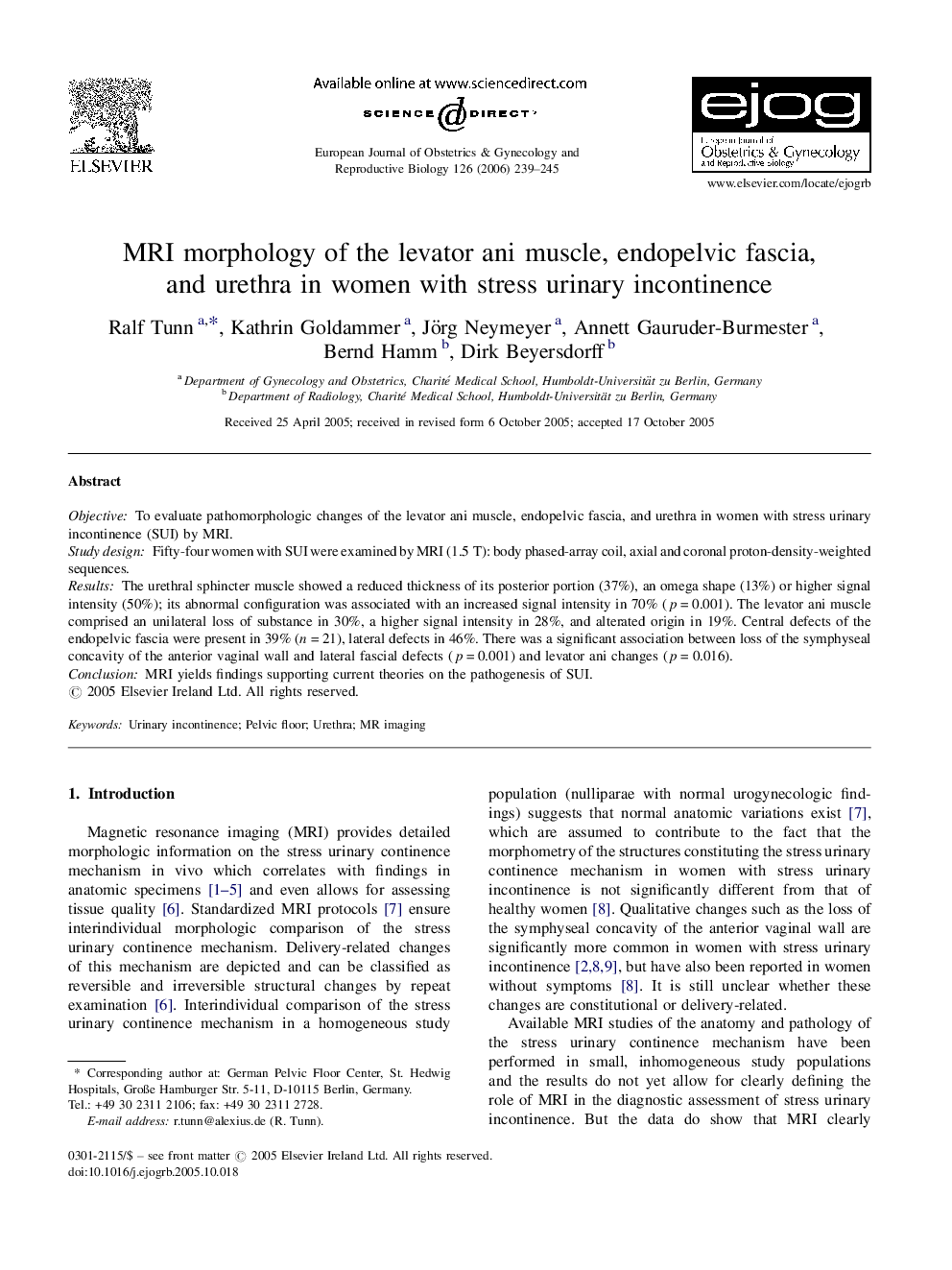| Article ID | Journal | Published Year | Pages | File Type |
|---|---|---|---|---|
| 3922179 | European Journal of Obstetrics & Gynecology and Reproductive Biology | 2006 | 7 Pages |
ObjectiveTo evaluate pathomorphologic changes of the levator ani muscle, endopelvic fascia, and urethra in women with stress urinary incontinence (SUI) by MRI.Study designFifty-four women with SUI were examined by MRI (1.5 T): body phased-array coil, axial and coronal proton-density-weighted sequences.ResultsThe urethral sphincter muscle showed a reduced thickness of its posterior portion (37%), an omega shape (13%) or higher signal intensity (50%); its abnormal configuration was associated with an increased signal intensity in 70% (p = 0.001). The levator ani muscle comprised an unilateral loss of substance in 30%, a higher signal intensity in 28%, and alterated origin in 19%. Central defects of the endopelvic fascia were present in 39% (n = 21), lateral defects in 46%. There was a significant association between loss of the symphyseal concavity of the anterior vaginal wall and lateral fascial defects (p = 0.001) and levator ani changes (p = 0.016).ConclusionMRI yields findings supporting current theories on the pathogenesis of SUI.
